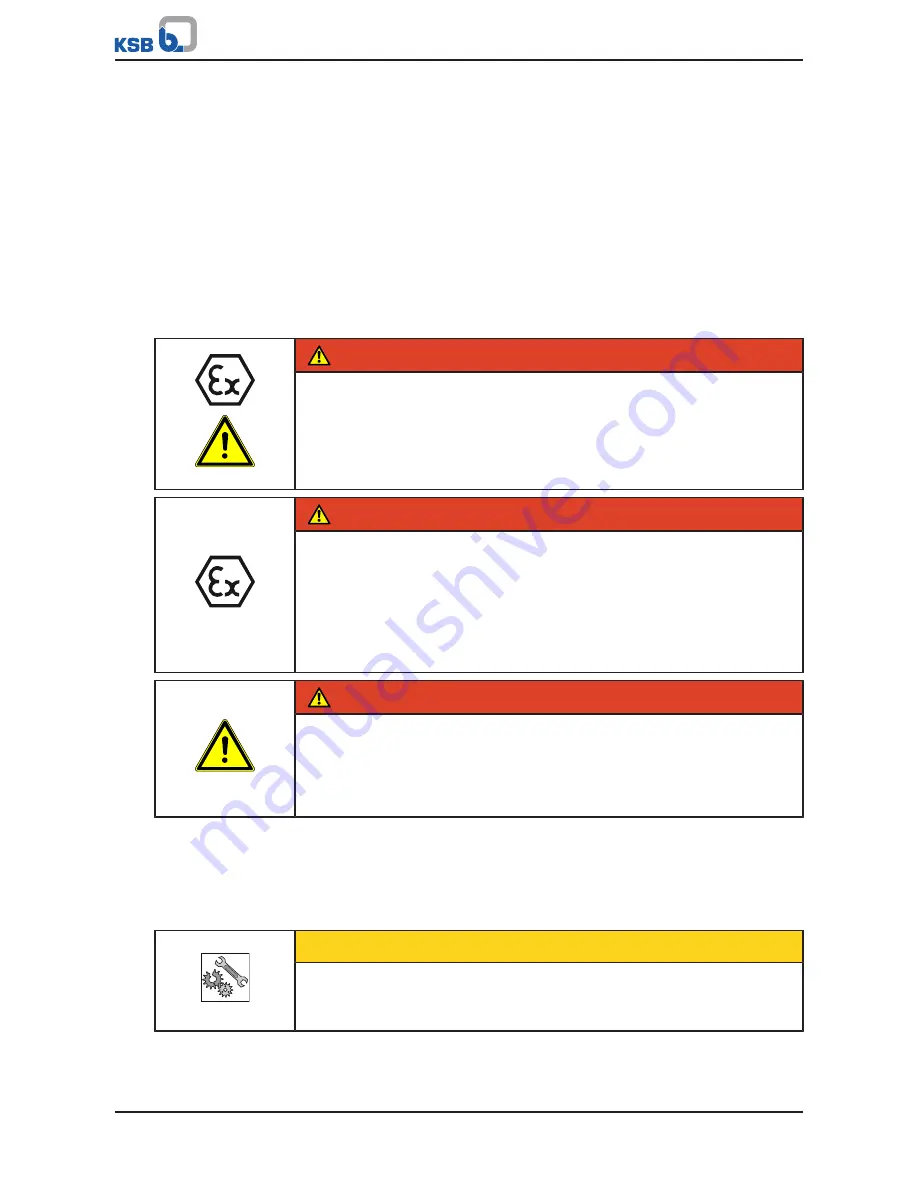
6 Commissioning/Start-up/Shutdown
39 of 72
HPK
–
Required pressure: 0.1 bar max. (observe any additional information given in
the general arrangement drawing!)
▪
Mechanical seal in tandem arrangement with quench liquid
In mechanical seal systems in tandem arrangement the outboard mechanical seal
serves as safety back-up seal designed to provide temporary sealing if the
inboard seal fails.
The mechanical seal system must be supplied with a quench liquid (typically cold
thermal oil) in order to dissipate the friction heat generated at the seal faces of
the outboard mechanical seal and to prevent the seal faces of the inboard
mechanical seal from coming into contact with atmospheric oxygen. This is
usually assured by means of a quench pot.
Quench pot installation and operating mode see supplementary sheet.
6.3.4 Priming and venting the pump
DANGER
Risk of potentially explosive atmosphere by mixing of incompatible fluids in the
auxiliary piping
Risk of burns!
Explosion hazard!
▷
Make sure that the barrier fluid or quench liquid are compatible with the fluid
handled.
DANGER
Risk of potentially explosive atmosphere inside the pump
Explosion hazard!
▷
The pump internals in contact with the fluid to be handled, including the seal
chamber and auxiliary systems must be filled with the fluid to be handled at all
times.
▷
Provide sufficient inlet pressure.
▷
Provide an appropriate monitoring system.
DANGER
Shaft seal failure caused by insufficient lubrication
Hot or toxic fluid could escape!
Damage to the pump!
▷
Before starting up the pump set, vent the pump and suction line and prime
both with the fluid to be handled.
1.
Vent the pump and suction line and prime both with the fluid to be handled.
2.
Fully open the shut-off element in the suction line.
3.
Fully open all auxiliary connections (barrier fluid, flushing liquid, etc).
6.3.5 Water cooling
CAUTION
Deposit-forming, aggressive cooling water
Damage to the pump!
▷
Observe the cooling water quality.






























